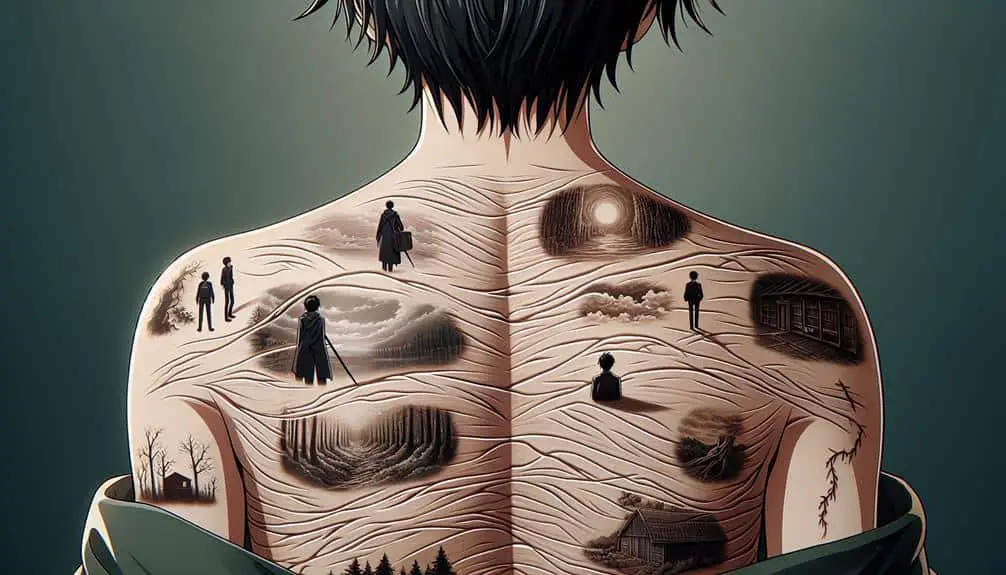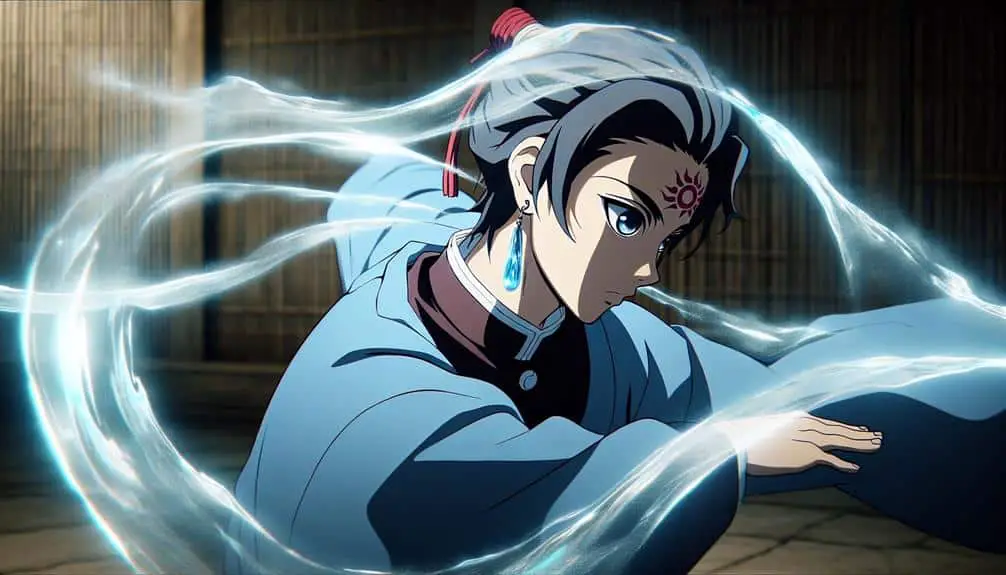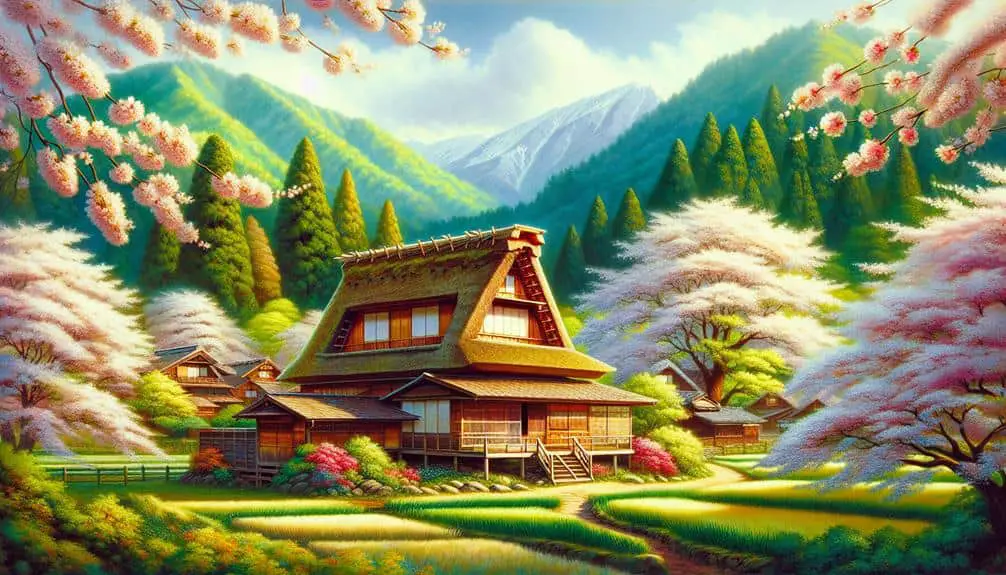Discover the intricate world of Upper Moon Demons' names to reveal historical, cultural, and symbolic influences shaping these formidable characters in Demon Slayer: Kimetsu no Yaiba. Names like Akaza, Doma, or Gyokko hold deep meanings and connections to mythology and linguistics. These names, each carefully chosen, reflect the demons' qualities, motivations, and relationships, adding layers of depth to their personas. Understanding the etymology and symbolism behind these names provides insights into the demons' identities. Every name carries a rich history and significance, contributing to the complexity and depth of the characters in the series.
Key Points
- Names of Upper Moon Demons reflect symbolic significance and cultural influences.
- Linguistic origins unveil hidden meanings and mythological connections in demon names.
- Cultural symbolism enriches the backgrounds and personas of Upper Moon Demons.
- Naming conventions draw upon mythological narratives to enhance characters' complexity.
- Names shape the identities, characteristics, and development of Upper Moon Demons.
Etymology of Upper Moon Demons
Exploring the origins of the names given to the Upper Moon Demons sheds light on the intricate etymology behind these powerful entities in the demon hierarchy.
The etymology exploration of the Upper Moon Demons' names reveals a deep connection to traditional Japanese folklore and mythology. Each demon's name is carefully crafted to reflect its characteristics, abilities, or role within the demon hierarchy.
For example, the naming conventions of Upper Moon One often draw inspiration from celestial bodies like the moon, symbolizing power, mystery, and dominance. Understanding the etymology behind these names not only provides insight into the demons themselves but also enriches the overall narrative of the demon slaying world.
Historical Significance in Naming
Explore how the Upper Moon Demons' names reflect naming traditions that have influenced their characters and abilities.
Delve into the historical significance of these names, uncovering the cultural symbolism embedded within each choice.
Analyze how the linguistic origins of the names reveal deeper meanings and connections to the demons' pasts.
Naming Traditions Influence
Naming traditions have played a significant role in shaping the historical significance of names given to Upper Moon Demons. These names aren't arbitrary but are deeply rooted in cultural influences and traditional practices. Understanding the naming conventions provides insights into the rich tapestry of meanings behind each demon's name.
Here are three key points to contemplate:
- Historical Context: Names of Upper Moon Demons often reflect the historical context of the period in which they were named, shedding light on significant events or beliefs prevalent at that time.
- Symbolism: Many names are laden with symbolic meanings, drawing from cultural symbols and myths that hold significance in the society that bestowed the names upon these demons.
- Legacy: These naming traditions carry a legacy that extends beyond mere labels, encapsulating the essence of the demon's character and powers in a single word.
Cultural Symbolism Embedded
Cultural symbolism intricately weaves historical significance into the names of Upper Moon Demons, reflecting the deep-rooted connections to societal beliefs and practices. The symbolic meanings embedded in these names offer a window into the cultural interpretations of the time when these demons were named.
Each name carries layers of meaning, often drawing from mythological narratives, religious contexts, or historical events. Through these names, one can unravel the intricate tapestry of beliefs and values held by the society that created them.
The naming process wasn't arbitrary but deliberate, aiming to encapsulate the essence of each demon and communicate it through a combination of sounds and symbolism. Understanding the cultural symbolism behind these names enhances one's appreciation for the rich history and traditions that shaped them.
Linguistic Origins Reveal
Revealing the linguistic origins of Upper Moon Demons' names provides a gateway to understanding their historical significance in the intricate tapestry of naming practices.
- Linguistic Connections: Examining the linguistic roots of these names uncovers fascinating connections to ancient dialects and languages, shedding light on the historical context in which these demons were named.
- Symbolic Interpretations: Delving into the etymology of these names allows for symbolic interpretations that expose deeper layers of meaning embedded in the demons' identities, reflecting cultural beliefs and values.
- Cultural Influences: By exploring the historical roots of the names, one can uncover the diverse cultural influences that have shaped the naming conventions surrounding these powerful entities, providing insights into the broader cultural landscape within which they exist.
Cultural Influences on Naming
With a rich tapestry of traditions and histories woven into their names, Upper Moon Demons exemplify the intricate cultural influences shaping their identities. The naming conventions of these demons reflect a blend of cultural diversity, symbolizing a fusion of different historical contexts. Each demon's name carries profound significance, often drawing from various mythologies, folklore, and religious beliefs prevalent in different cultures.
The naming conventions of the Upper Moon Demons not only serve as identifiers but also serve to provide insight into their origins and characteristics. These names are carefully crafted to evoke specific emotions or convey particular traits associated with each demon. By delving into the cultural influences behind these names, one can unravel the layers of symbolism embedded within them, offering a deeper understanding of the demons' essence.
Exploring the historical context surrounding the naming of Upper Moon Demons sheds light on the rich tapestry of cultural influences that have shaped these powerful entities. Understanding the intricate connections between their names and cultural backgrounds enhances the appreciation of the depth and complexity of these demonic beings.
Symbolism in Demon Names
As you explore the symbolism in demon names, you'll uncover layers of meaning and cultural references embedded within each name. These names aren't randomly chosen but are crafted to convey specific traits or powers associated with the demon.
Name Meanings
Delving into the domain of demonology, the titles of Upper Moon Demons carry profound symbolism and meaning that mirror their essence and power.
- Name interpretations and symbolism: Each Upper Moon Demon's name often reflects their abilities, characteristics, or role within the demon hierarchy.
- Cultural influences and linguistic origins: The names of these demons derive from various cultural and linguistic sources, ranging from ancient folklore to modern interpretations.
- Symbolic significance: The intricate meanings behind these names reveal a deeper connection to the demon's nature and purpose, providing insights into their origins and intentions.
Cultural References
Investigating the depths of demonology reveals a rich tapestry of cultural references embedded within the symbolism of Upper Moon Demons' names. Each demon's name often carries cultural interpretations and historical backgrounds that add layers of meaning to their character.
For example, the name of a demon might be derived from ancient myths or folklore, reflecting the beliefs and traditions of a particular culture. By delving into these cultural references, one can gain a deeper understanding of the demon's origins and significance within the narrative.
The incorporation of such historical elements adds depth and complexity to the demon's characterization, offering a glimpse into the intricate world-building crafted by the creators.
Linguistic Analysis of Names
Taking a closer look at the Upper Moon Demons' names reveals a depth of linguistic intricacy and symbolism that enriches their characterizations within the narrative.
- Phonetic Analysis: The phonetic structure of the Upper Moon Demon names often reflects their personality traits or abilities. For example, the sharp, staccato sounds in some names may suggest aggression or power, while softer, flowing sounds could evoke elegance or mystique.
- Cultural Interpretations: These names aren't just random combinations of sounds; they're often steeped in cultural significance. By delving into the cultural roots of the names, one can uncover layers of meaning that add depth to the characters and their roles in the story.
- Symbolic Meanings: Each name carries symbolic weight, whether through direct translation or association with mythological concepts. Understanding these symbolic meanings can offer insights into the character's motivations, relationships, and ultimate fates.
Mythological Connections in Naming
Investigating the Upper Moon Demons' names reveals complex mythological connections that enhance their characters with layers of symbolic significance and depth. These demons' names often carry profound mythological connections that add a rich cultural significance to their identities. The naming traditions of these demons seem to draw from a diverse range of mythologies, weaving together elements from various cultural backgrounds to create a tapestry of symbolic meaning.
The linguistic origins of the Upper Moon Demons' names showcase a deep understanding of mythological references, reflecting the creators' attention to detail and their desire to imbue each character with nuanced significance. By delving into the mythological connections embedded within these names, you can uncover hidden layers of meaning that enrich the overall narrative and contribute to a deeper understanding of the demons' personalities and motivations. The intricate web of mythological influences at play in the naming of these demons underscores the complexity and depth of their characters, making them truly fascinating entities within the story.
Hidden Meanings Behind Names
When examining the hidden meanings behind the names of Upper Moon Demons, it's important to take into account the symbolism embedded within each name. These names often carry cultural influences, reflecting the rich tapestry of myths and legends that shape the demons' personas.
Additionally, delving into the linguistic origins of these names can reveal intriguing connections to historical contexts and ancient languages.
Symbolism in Names
Delving into the names of Upper Moon Demons reveals a hidden world of symbolism and meaning that adds depth to their characters. Each name is carefully crafted to convey specific qualities and traits, offering insight into the demon's nature.
- Symbolic Meanings: The names of Upper Moon Demons often hold symbolic significance, reflecting their powers, personalities, or roles within the demon hierarchy.
- Cultural Influences: These names are influenced by various cultural elements, such as mythology, folklore, or historical references, which enrich the demons' backgrounds.
- Character Development: Understanding the symbolism behind their names can provide a deeper understanding of the demons' motivations, relationships, and overall character arcs.
Cultural Influences
Exploring the cultural influences behind the names of Upper Moon Demons uncovers a rich tapestry of hidden meanings that shape their identities and backgrounds. Cultural interpretations play a significant role in understanding the symbolic influences embedded in these names.
Each demon's name carries historical context that reflects ancient beliefs, traditions, and myths, providing clues to their powers and personalities. Linguistic connections further enhance the depth of these names, linking them to specific languages or dialects that add layers of meaning.
Linguistic Origins
Revealing the hidden linguistic origins behind the names of Upper Moon Demons exposes layers of symbolic meanings that intricately define their essence and significance within the narrative.
- Linguistic Evolution: Unraveling the linguistic evolution of these names provides insights into the historical roots and transformations that have shaped the characters' identities over time.
- Cultural Influences: Understanding the cultural influences embedded in the names of Upper Moon Demons uncovers the rich tapestry of beliefs, traditions, and mythologies that contribute to their portrayal in the story.
- Symbolic Significance: Delving into the obscured meanings behind these names allows for a deeper appreciation of the symbolic significance attached to each Upper Moon Demon, adding layers of complexity to their roles and interactions within the narrative.
Naming Conventions of Upper Moons
When naming the Upper Moons in the demon hierarchy, specific conventions and patterns are followed to convey their power and significance within the series. The naming traditions of the Upper Moons draw upon symbolism and contemporary relevance to create names that resonate with the audience and add depth to the characters. Each Upper Moon's name is carefully crafted to reflect their strength, abilities, or personality traits, giving viewers insight into what to expect from these formidable foes.
Modern interpretations of these naming conventions often highlight the intricate web of meanings woven into each demon's name. From references to mythological figures to nods towards natural elements, the names of the Upper Moons serve as a reflection of their essence and role within the series. By delving into the symbolism behind these names, fans can unravel the layers of meaning embedded in the demon hierarchy, enriching their understanding and appreciation of these powerful adversaries.
Impact of Names on Demon Characters
Names play an essential role in shaping the identities and characteristics of demon characters in the series, influencing how they're perceived by the audience and adding depth to their portrayal. When it comes to the Upper Moon Demons in the series, naming choices go beyond mere labels and have a profound impact on character development. Here are three key aspects regarding the impact of names on demon characters:
- Character Development: The names given to the Upper Moon Demons are carefully crafted to reflect their unique traits and backstories. These names contribute considerably to how the characters evolve throughout the series, guiding their actions and decisions in line with their designated identities.
- Name Symbolism: Each demon's name holds symbolic significance, offering insights into their personalities and powers. The symbolism embedded in their names enriches the narrative by providing a deeper understanding of the demons' motivations and behaviors.
- Demon Personalities: Through their names, the audience gains a glimpse into the personalities of the Upper Moon Demons. The names chosen for these characters not only differentiate them but also hint at their individual quirks, strengths, and weaknesses, allowing for a more nuanced portrayal that resonates with viewers.
Evolution of Naming Upper Moon Demons
The naming conventions for the Upper Moon Demons have undergone a significant transformation, reflecting a deeper exploration of their origins and thematic connections within the narrative. Name evolution within the context of cultural shifts has played a pivotal role in shaping the identities of these powerful beings.
Initially, the names of the Upper Moon Demons were more straightforward, often directly reflecting their abilities or characteristics. However, as the series progressed, there was a noticeable shift towards more nuanced and symbolic names that delved into the deeper layers of their personalities and motivations.
Symbolism now plays an important role in the naming trends of the Upper Moon Demons, with names being carefully crafted to convey not only their strength but also their inner struggles and complexities. This evolution in naming reflects a growing sophistication in character development and storytelling, allowing for a more profound exploration of the demons' roles within the narrative.
As cultural perceptions and storytelling techniques have evolved, so too have the names of these formidable adversaries, adding layers of depth and meaning to their characters.




